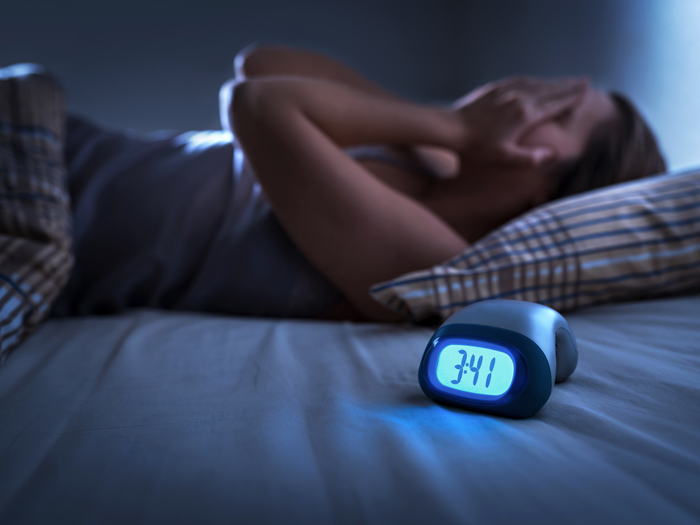Coronasomnia Is Real and a Pressing Safety Hazard that Employers Must Address

William Shakespeare is credited with creating 1,700 words that we still use today, from “bedroom” and “eyeball” all the way to “alligator” and “skim milk.”
It’s human ingenuity to adapt our language to meet growing times.
Case in point, words and phrases like “PPE” or “social distancing” or — you guessed it — “COVID-19” didn’t exist in our shared lexicon a year ago the way they do today.
Now we bring you “coronasomnia,” a term coined to describe insomnia set on by the coronavirus.
Some are even calling coronasomnia a second world-wide health crisis, as more individuals fall victim to sleepless nights filled with anxiety, depression and fear caused by the virus. According to the Centers for Disease Control and Prevention, one in three U.S. adults gets less than the recommended seven hours of sleep each night, and trends suggest this is only getting worse.
“Sleep is such a critical factor in overall health and wellness,” said Dr. Mark Williams, medical director at The Hartford. “Lack of sleep or disrupted sleep affects behaviors and emotions and cognitive ability. There’re also physical impacts. All of these things can lead to reduction in productivity and increased risk for injury at work.”
Sleep deprivation is not isolated to one industry either. Luckily, employers across the board have a few tricks available to them to help their employees cope with not only poor sleeping habits but also the virus woes plaguing them at night.
What Happens When We Lose Sleep
Sleep professionals agree that sleep plays a vital role in cognitive function and our ability to stay on task, but few outside of the professional sleep realm truly grasp the severity of lack of sleep.
The National Safety Council, in 2019, conducted a systematic review of the sleep lessons learned, and applying it to the workforce, its researchers concluded that 13% of all workplace injuries can be attributed to sleep problems. That could equal an economic impact of about $400 billion.
“That’s a huge number,” said Williams. He added that shift work plays a particularly large role in workplace injuries related to sleep. “OSHA reported that people who work more than 12 hours a day directly associates with a 37% increase in the risk of injury. The data is there. It shows just how severe an issue lack of sleep is.”
For workers’ compensation professionals looking to reduce the number of injuries and mishaps among workers, these are staggering statistics to contend with.
However, it’s no surprise that a few missed hours of shut eye each night can lead to such high-risk results. Something as routine as communication can get muddled by employees functioning on less sleep. Mistakes, errors of omission and reaction time decreases can all lead to injury.

Dr. Mark Williams, medical director, The Hartford
One study from the Journal of Occupational Health Psychology found that workers in Oregon who had less sleep tended to have a bigger struggle with remembering correct work procedures. Employees couldn’t remember if equipment was turned off, some unintentionally were pressing control switches on machines or stopped working on the machine altogether. Daydreaming and not listening to coworkers was also recorded, all of which led to mistakes.
Further “the physiologic impact is just as concerning,” said Williams. “Lack of sleep can lead to weight gain, a higher incidence of cancer, hypertension, cardiovascular disease, and other increases in poor health.”
With poor health comes higher health care spend and costs to employers in the event of injury.
How COVID Has Changed the Game
COVID-19 brought more than a risk of disease with it. For everyone across the globe, daily life took a drastic turn. Families have gone without seeing loved ones, children have shifted to virtual schooling, friends have traded happy hours for Zoom calls.
And workers have moved to the home office.
“Americans are working longer hours and they’re sleeping less” as a result, said Williams. That’s because the line between home and work has blurred. Employees will stay logged in longer, stretching out their workday and potentially driving up their risk of burnout. To compensate, those same workers will stay up later to take care of their home needs.
All the while, the anxieties induced by the pandemic itself have folks tossing and turning at night.
“People are dealing with this health crisis and also with what the World Health Organization has termed an ‘infodemic.’ There’s been so much information out there, and particularly early on, a lot of contradictory information. It’s caused anxiety and confusion. That’s become the backdrop to this pandemic,” Williams said.
To dig deeper into the issue, China conducted a study last year reviewing the impact COVID-19 has had on its citizens. In its findings, published June 2020, researchers found an increased rate of clinically significant insomnia in 20% of the population. That was a 37% increase over baseline.
“They also found acute stress, anxiety and depression increases as well,” Williams said. “Similarly, the English did a survey, and they found that reported sleep problems rose from a baseline of one in six people to one in four.”
Another consequence of the pandemic is a rise in substance use and addiction, both of which are detrimental to a person’s overall wellbeing and can disrupt regular sleeping habits.
The Hartford gathered information through a pulse survey and found that 61% of U.S. workers are experiencing burnout at work. “How they’re actually dealing with that has been things like an increase in binge watching TV and eating unhealthy snacks or using things like alcohol and other substances,” Williams explained.
Finally, for individuals who have contracted the disease and have since recovered, COVID is still taking its toll on sleep. “Reports show that people who have become ill and had COVID-19 are now finding their sleep patterns being disrupted after the infection,” Williams said. “We know that the virus can damage multiple organ systems, and the nervous system has been no exception.”
What Employers Can Do
While employers can’t check in at night to make sure their employees are going to bed on time, they can help educate their workforce on the benefits and detriments surrounding sleep.
As an example, The Hartford has partnered with Sleepio, a cognitive behavioral therapy-based program, as a way to not only provide a more in-depth education to employees on sleep but also to present cognitive behavioral therapies that could improve sleep.
“We have had 3,900 employees take the 6-week program, and they gained an average of four hours of sleep per week. There was an 80% decrease in those stating they are seriously troubled by their sleep after completing the program. Also, there were meaningful decreases in levels of stress, impaired productivity, anxiety/depression among employees who finished the program,” Williams explained.
A final step employers can take to bring good sleep hygiene into the workplace is adopting a snooze-friendly policy. That could include allowing naptime during work hours or even rewarding workers for sticking to their set hours instead of prioritizing late shifts and overtime.
“Employers should also be scrutinizing work schedules and rotating shifts to better their fatigue management efforts,” Williams added.
At the end of the day, employers must understand that coronasomnia is no joke. There’s a lot at stake and maintaining a safe work environment should start with a review on sleep’s effect on workers. Afterall, as Shakespeare might say, sleep is “such stuff as dreams are made on.” &










